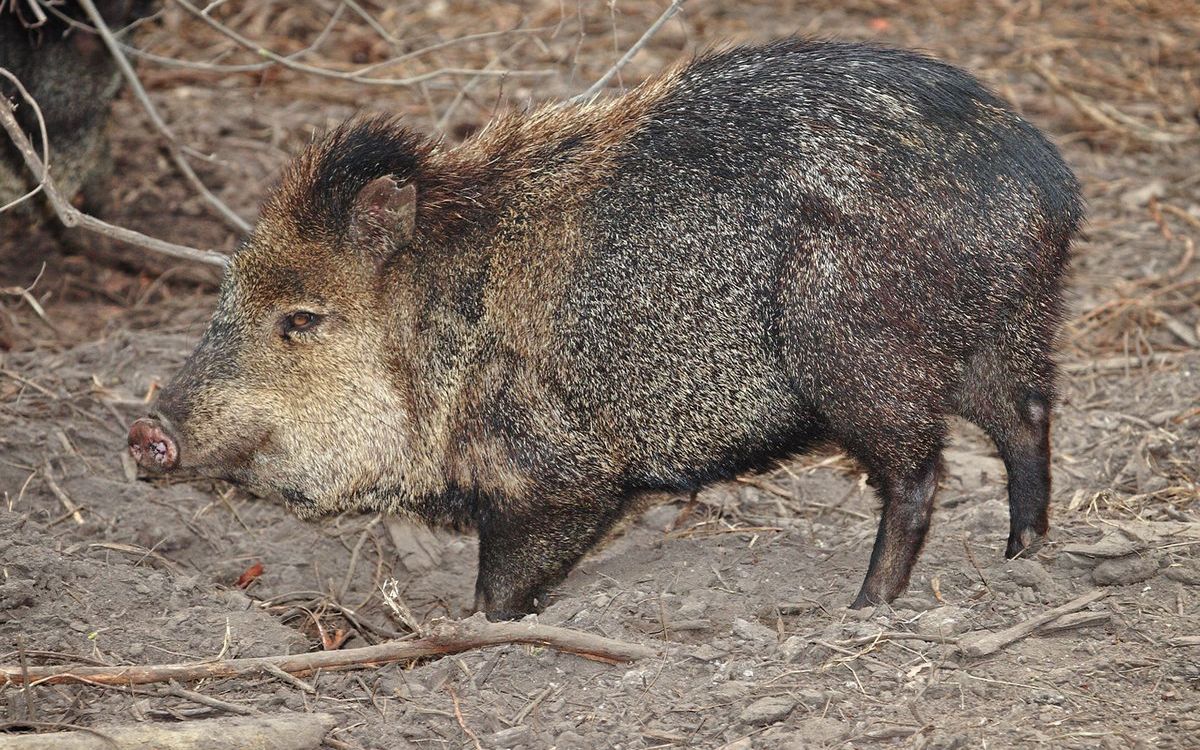
Ever wondered what makes the collared peccary so unique? These fascinating creatures, often mistaken for pigs, have some truly remarkable traits. Found mainly in the Americas, they thrive in diverse habitats, from deserts to rainforests. Known for their distinctive collar of lighter fur around their neck, these animals are social and live in groups called herds. They communicate using a variety of sounds and even have scent glands to mark their territory. Despite their small size, collared peccaries are tough and can defend themselves against predators. Ready to learn more? Let's dive into 30 intriguing facts about these resilient creatures!
What is a Collared Peccary?
The collared peccary, also known as the javelina, is a fascinating creature often mistaken for a wild pig. Native to the Americas, these animals have unique characteristics and behaviors that set them apart from other wildlife.
- Collared peccaries are not pigs. Despite their pig-like appearance, they belong to a different family called Tayassuidae.
- They get their name from the white band or "collar" around their neck, which contrasts with their dark fur.
- These animals have scent glands on their backs, which they use to mark territory and communicate with each other.
- Unlike pigs, collared peccaries have three toes on their hind feet instead of four.
- They are social animals, often found in groups called "sounders," which can consist of up to 50 individuals.
Habitat and Distribution
Collared peccaries are adaptable creatures found in various environments. Their range extends from the southwestern United States to Argentina.
- They thrive in diverse habitats, including deserts, tropical rainforests, and scrublands.
- In the United States, they are commonly found in Arizona, Texas, and New Mexico.
- These animals are excellent at adapting to human-altered landscapes, often seen near agricultural areas.
- They prefer areas with dense vegetation, which provides cover from predators and harsh weather.
- Collared peccaries are also known to inhabit mountainous regions, sometimes at elevations up to 10,000 feet.
Diet and Feeding Habits
Collared peccaries have a varied diet that helps them survive in different environments. They are omnivores, meaning they eat both plants and animals.
- Their diet primarily consists of fruits, roots, tubers, and cacti.
- They have a special fondness for prickly pear cactus, which provides both food and water.
- Collared peccaries also eat small animals, insects, and carrion when plant food is scarce.
- They use their strong snouts to dig for roots and tubers, which are rich in nutrients.
- These animals are known to raid agricultural fields, feeding on crops like corn and beans.
Behavior and Social Structure
Collared peccaries exhibit interesting social behaviors and have a complex social structure. Understanding these behaviors can provide insight into their survival strategies.
- They communicate using a variety of vocalizations, including grunts, growls, and squeals.
- Scent marking is crucial for maintaining social bonds and territory boundaries.
- Collared peccaries are diurnal, meaning they are most active during the day.
- They often rest in shaded areas or burrows during the hottest parts of the day to avoid overheating.
- These animals are known for their strong family bonds, often grooming each other to reinforce social ties.
Reproduction and Lifespan
The reproductive habits of collared peccaries are another fascinating aspect of their biology. They have unique breeding patterns and parental behaviors.
- Females can give birth to one to four offspring, known as "reds" due to their reddish-brown fur.
- Unlike many other mammals, collared peccaries do not have a specific breeding season and can reproduce year-round.
- The gestation period for a collared peccary is about 145 days.
- Newborns are precocial, meaning they are relatively mature and mobile shortly after birth.
- Collared peccaries have a lifespan of about 10 years in the wild, though they can live longer in captivity.
Predators and Threats
Despite their tough appearance, collared peccaries face numerous threats from predators and human activities. Understanding these threats is crucial for their conservation.
- Natural predators include jaguars, pumas, and coyotes.
- Young peccaries are particularly vulnerable to predation by birds of prey and snakes.
- Habitat loss due to deforestation and urbanization poses a significant threat to their populations.
- Collared peccaries are sometimes hunted for their meat and hides, which can impact local populations.
- Conservation efforts are in place in some regions to protect their habitats and ensure their survival.
The Final Word on Collared Peccaries
Collared peccaries are fascinating creatures with unique traits and behaviors. From their social structures to their diet, these animals offer a glimpse into the diverse world of wildlife. They play a crucial role in their ecosystems, helping to maintain balance by controlling plant growth and serving as prey for larger predators. Understanding these animals can deepen our appreciation for nature's complexity and the interconnectedness of all living things. Whether you're a wildlife enthusiast or just curious, learning about collared peccaries enriches your knowledge of the natural world. So next time you spot one, you'll know a bit more about what makes these creatures so special. Keep exploring, stay curious, and remember, every species has its own story to tell.
Was this page helpful?
Our commitment to delivering trustworthy and engaging content is at the heart of what we do. Each fact on our site is contributed by real users like you, bringing a wealth of diverse insights and information. To ensure the highest standards of accuracy and reliability, our dedicated editors meticulously review each submission. This process guarantees that the facts we share are not only fascinating but also credible. Trust in our commitment to quality and authenticity as you explore and learn with us.
